Abstract
The human brain may be regarded as an irreversible system which is constrained by a fixed inflow of free energy in the form of chemical nourishment from within the body and information from the environment. The evolution of the internal spontaneous process may be described as a path on the saddle surface of entropy production rate in the configuration space of the process variables. From any initial state of high entropy production the system evolves towards the saddle point by a series of regessions to temporary minima alternating with fluctuations which introduce new internal constraints and open new channels for regression. The spontaneous regression steps of the process are to be associated with the learning process and the deductive processes of thought since information is necessarily being stored, whereas the fluctuation or nucleation steps are to be associated with the inductive or creative part of the thought process. The state of consciousness is to be associated with the system undergoing regression. If, under certain boundary conditions, the system attains the stable saddle point, a state of unconsciousness is attained in which no change of state variables occurs in time. The stability of this state is indicated by its resistance to perturbation.
Full text
PDF
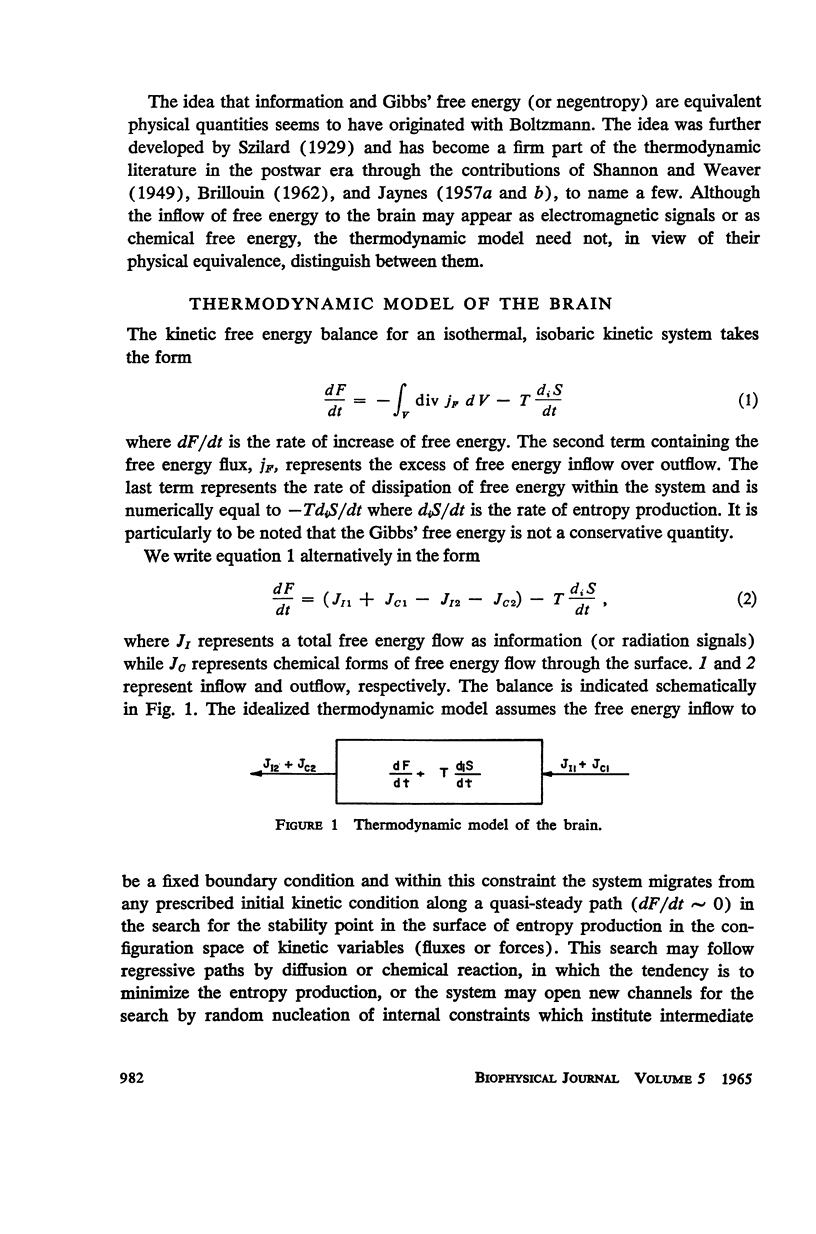
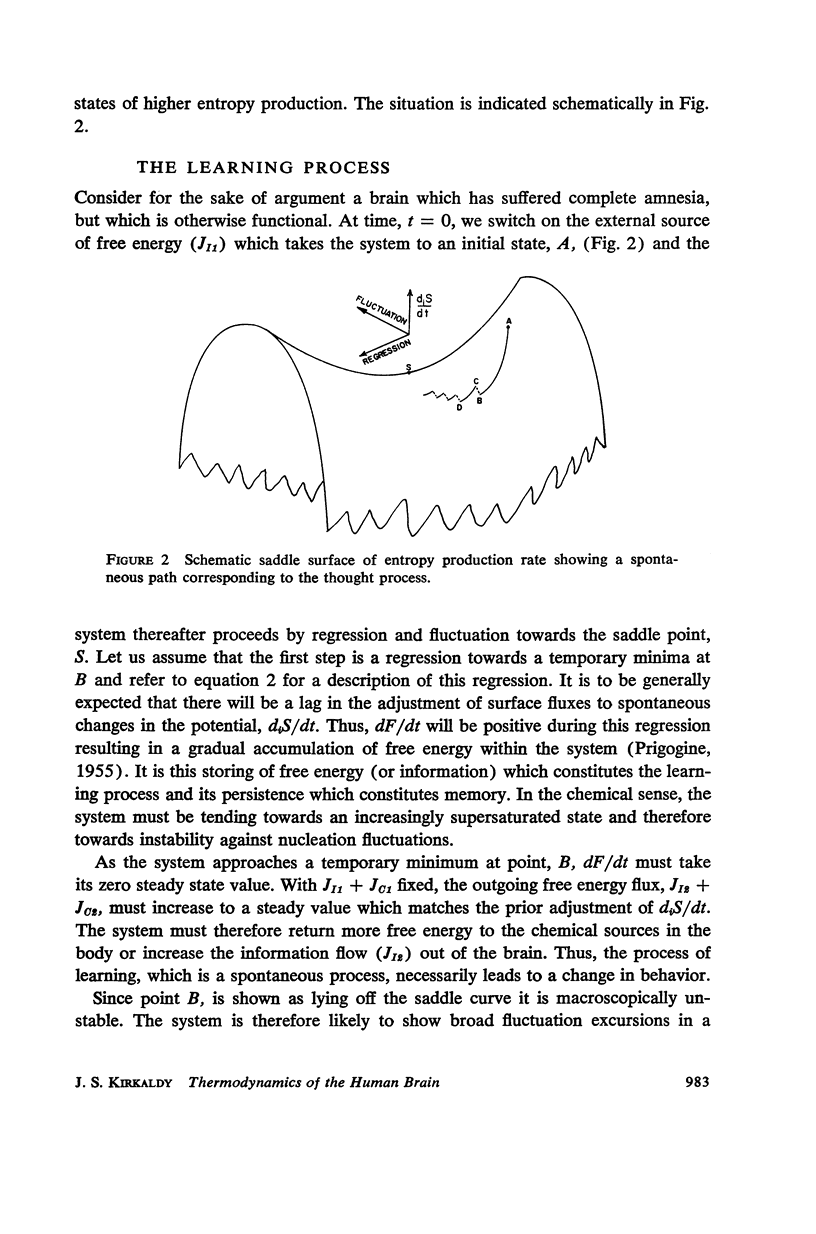
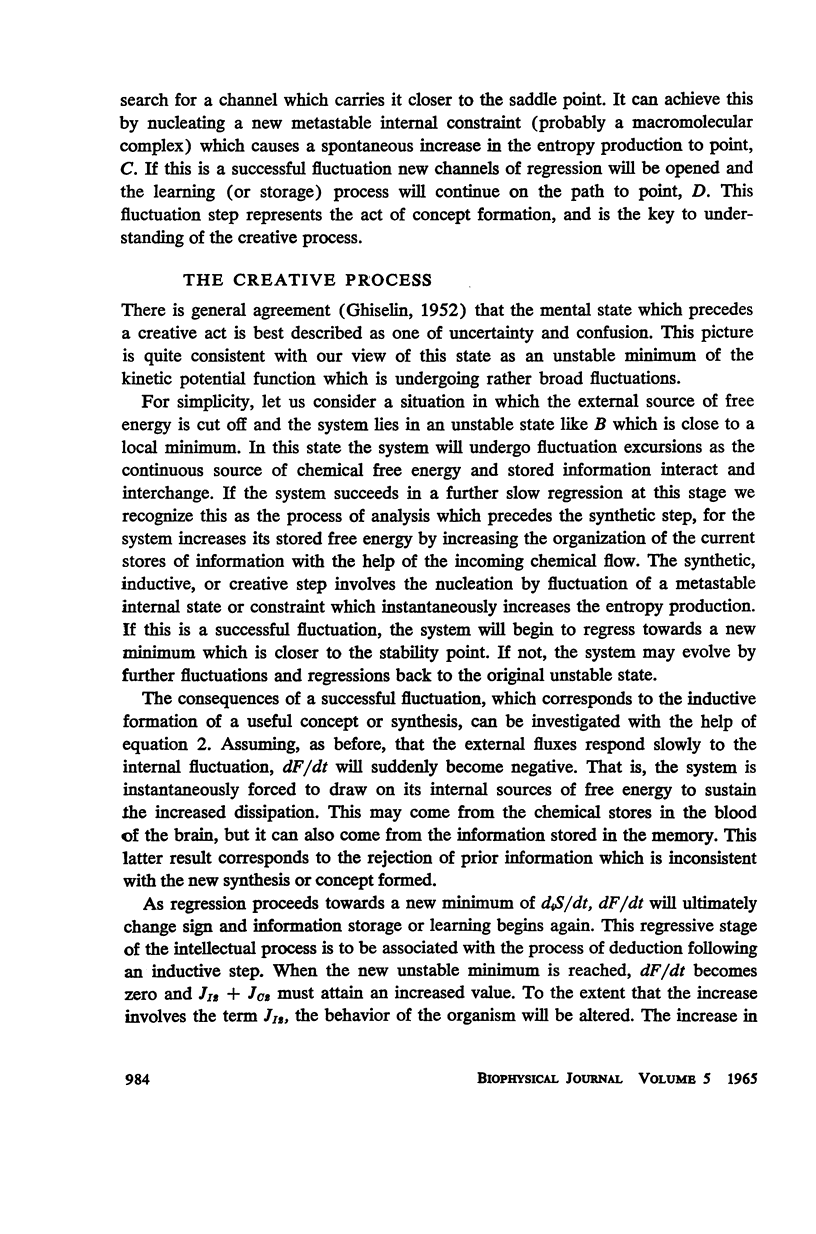
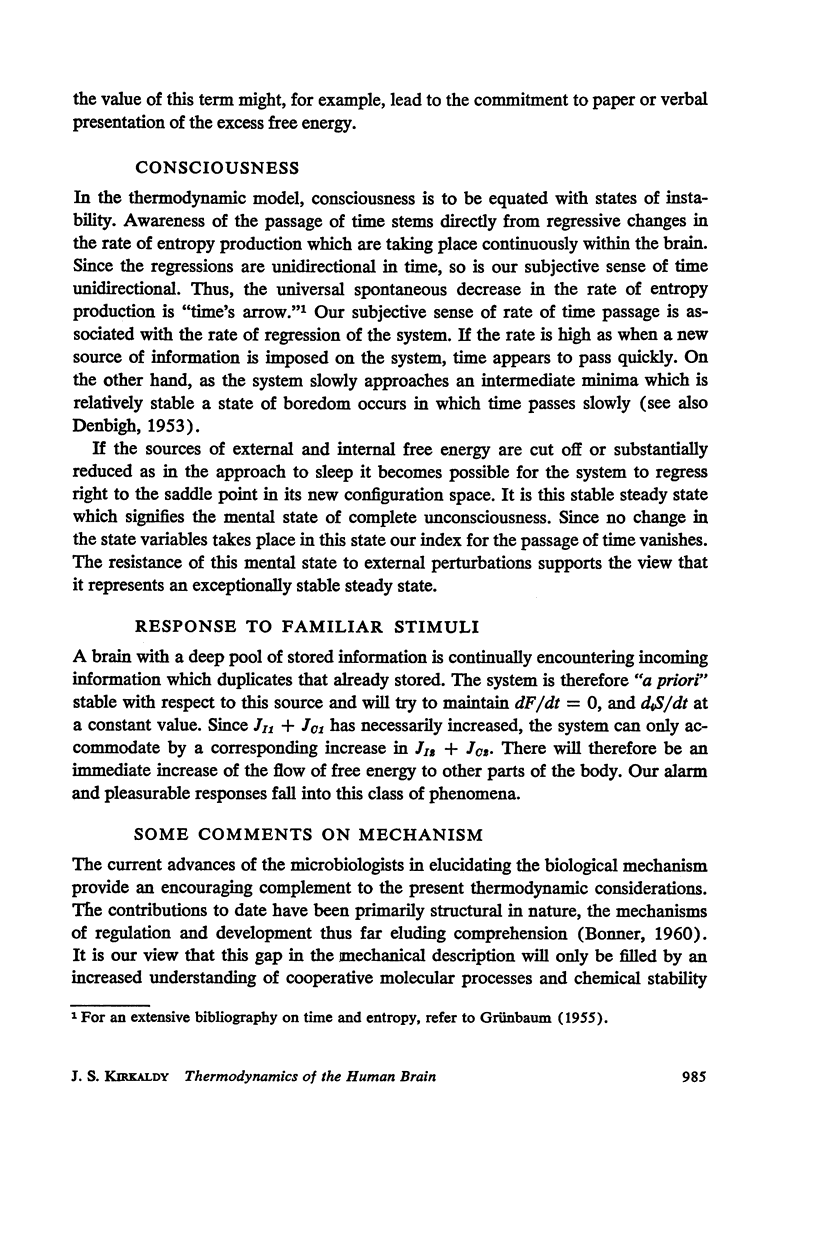
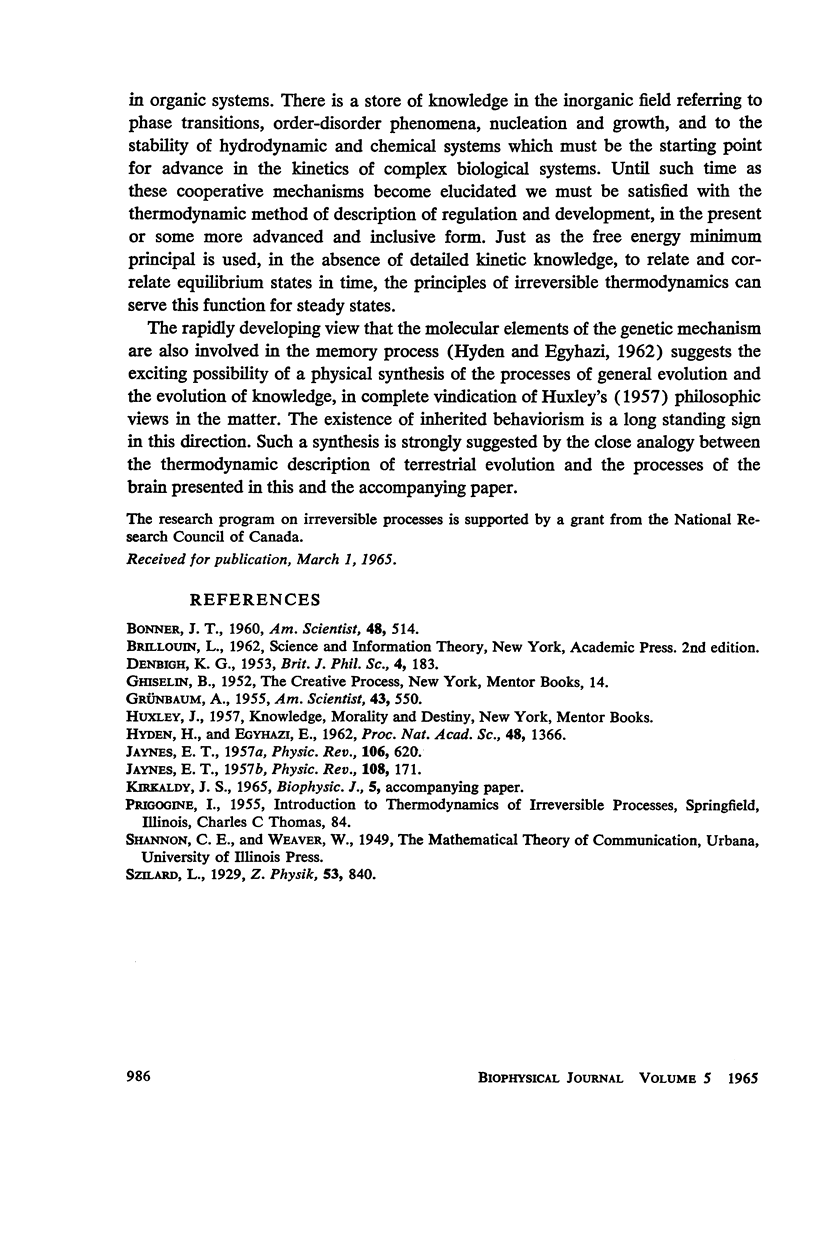
Selected References
These references are in PubMed. This may not be the complete list of references from this article.
- HYDEN H., EGYHAZI E. Nuclear RNA changes of nerve cells during a learning experiment in rats. Proc Natl Acad Sci U S A. 1962 Aug;48:1366–1373. doi: 10.1073/pnas.48.8.1366. [DOI] [PMC free article] [PubMed] [Google Scholar]


